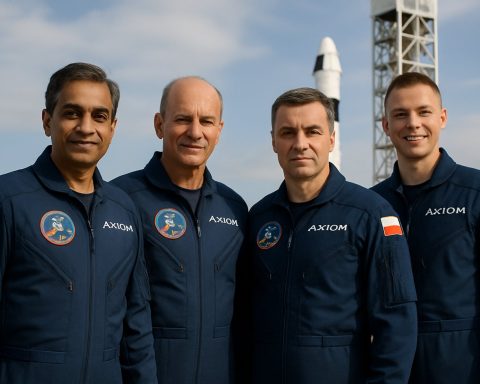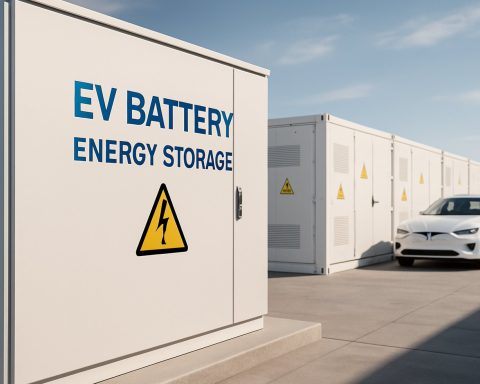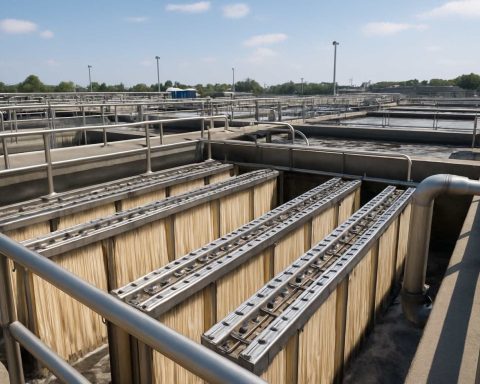- Atul Greentech and Amara Raja Group form a strategic alliance to advance India’s electric vehicle (EV) industry.
- The partnership focuses on manufacturing advanced Lithium Iron Phosphate (LFP) battery packs, boosting India’s EV infrastructure.
- Amara Raja’s Giga Corridor in Telangana will be a central hub for this cutting-edge battery production.
- This collaboration emphasizes India’s commitment to energy independence and environmental responsibility.
- Both companies aim to enhance cell development with innovative chemistry for more efficient power solutions.
- The initiative seeks to establish a robust domestic ecosystem for EV components, encouraging sustainable transportation.
- Atul Greentech’s electric three-wheelers are set to become symbols of urban mobility innovation and efficiency.
- India positions itself as a leader in renewable energy and sustainable transportation with this transformative partnership.
A stroke of strategic genius unfolds in India as two titans, Atul Greentech Private Limited and the Amara Raja Group, unite to catalyze the nation’s electric vehicle (EV) evolution. This landmark alliance marks a pivotal chapter in India’s journey toward a greener, electrified future. It brings together Atul Greentech’s innovative prowess and Amara Raja’s technological expertise in a symphony poised to redefine the landscape of electric mobility.
Picture the vibrant, bustling roads of India, teeming with an orchestra of colorful three-wheelers—each silently zipping by, powered by the advanced Lithium Iron Phosphate (LFP) battery packs envisioned in this collaboration. As the world watches India transform its transportation network, this partnership will manufacture these battery packs at Amara Raja’s state-of-the-art Giga Corridor located in Telangana, where engineering meets sustainability on a grand scale.
This venture symbolizes more than just manufacturing prowess; it is a powerful statement about India’s commitment to energy independence and environmental stewardship. Amara Raja, through its Advanced Cell Technologies subsidiary, envisions a seamless harmony where cutting-edge battery technology meets everyday mobility needs. The partnership intends to delve deeper than just surface technology, venturing into the heart of cell development with groundbreaking chemistry cells that promise longer-lasting, more efficient power sources.
Beyond the production lines and research labs, this alliance paints a broader picture of an India that stands ready to lead the charge in sustainable transportation. Atul Greentech’s electric three-wheelers, already a staple in urban mobility, are set to become icons of innovation and efficiency. This collaboration aims to carve a path that encourages other industries to follow, emphasizing the urgency of establishing a robust domestic ecosystem for EV components, from chargers to battery packs—a crucial step as India embraces the accelerating shift toward electric mobility.
Yet, this is not just about technology and production. It’s a story of two visionaries—Atul Auto and Amara Raja—drawing on their illustrious histories, now intertwined with a common purpose. This is the dawn of a new era, a promise fulfilled by local innovation and collaboration that hopes to echo well beyond India’s borders. As the world races to curb emissions and embrace renewability, India sets a shining example with this audacious leap forward.
Stay tuned, for the roads are set to hum a new tune, one powered by passion, innovation, and an unwavering commitment to a sustainable tomorrow.
India’s Innovations in Electric Mobility: A Game-Changing Alliance
Unleashing the Future of Electric Mobility in India
The collaboration between Atul Greentech Private Limited and the Amara Raja Group signals a revolutionary shift in India’s approach to electric vehicle (EV) development. This alliance not only represents a strategic juncture in the evolution of India’s green transportation but also serves as a beacon for renewable energy adoption worldwide.
Deep Dive into Lithium Iron Phosphate (LFP) Technology
At the heart of this collaboration is the adoption of advanced Lithium Iron Phosphate (LFP) battery technology. LFP batteries are renowned for their stability, safety, and efficiency, making them ideal for the dynamic energy demands of electric vehicles. These batteries provide a longer lifecycle, reduced dependence on cobalt, and improved thermal stability which is crucial for the hot Indian climate.
How-To Steps: Transitioning to Electric Vehicles
1. Research EV Models: Begin by evaluating the EV models available in the market, focusing on specifications, range, and charging infrastructure.
2. Evaluate Charging Needs: Determine if home charging can meet your daily travel needs or if you require access to public fast-charging stations.
3. Budget for Purchase and Maintenance: Consider the initial investment, potential government incentives, and the lower maintenance costs of EVs compared to traditional vehicles.
4. Consult with Experts: Engage with industry experts or EV consultants to understand the technical and practical aspects of owning an electric vehicle.
Market Forecast and Industry Trends
The electric vehicle market in India is poised for rapid expansion. As per Mordor Intelligence, the Indian EV market is projected to grow at a CAGR of over 44% during 2021-2026. With favorable government policies, increasing investments in infrastructure, and competitive pricing, the country’s transition to electric mobility is set to gain momentum.
Real-World Use Cases
Atul Greentech’s electric three-wheelers have already gained traction in urban centers, offering a cleaner, quieter alternative to traditional auto-rickshaws. By integrating Amara Raja’s battery technology, these vehicles will deliver enhanced performance and reliability, making them suitable for both passenger transport and goods delivery over short distances.
Controversies and Limitations
Despite the promising outlook, challenges persist. The lack of widespread charging infrastructure remains a hurdle, alongside the high initial cost of battery technology. Additionally, the recycling and disposal of battery components continue to be areas that require significant development to ensure sustainability.
Insights and Predictions
– Government Initiatives: India’s push for EV adoption is backed by various subsidies and incentives aimed at reducing the cost barrier for EV buyers.
– Technological Advancements: Innovations in battery technology are expected to further improve the range and efficiency of EVs, making them more competitive against internal combustion engines.
– Global Influence: This strategic partnership may influence similar collaborations worldwide, showcasing India as a hub for EV innovation and manufacturing.
Actionable Recommendations
– For Consumers: Consider switching to electric vehicles to take advantage of lower fuel costs and maintenance expenses while contributing to reduced emissions.
– For Businesses: Invest in electric fleet solutions to benefit from operational savings and potential government incentives.
– For Policymakers: Focus on developing comprehensive charging infrastructure and facilitating industry partnerships to accelerate EV adoption.
Stay Connected with Innovations
For further updates on technology and innovation in the electric mobility sector, consider visiting the main websites of Atul Auto and Amara Raja:
– Atul Auto
– Amara Raja Group
These steps and insights emphasize the potential of India’s EV industry to revolutionize urban mobility, foster economic growth, and lead the charge toward a sustainable future.











